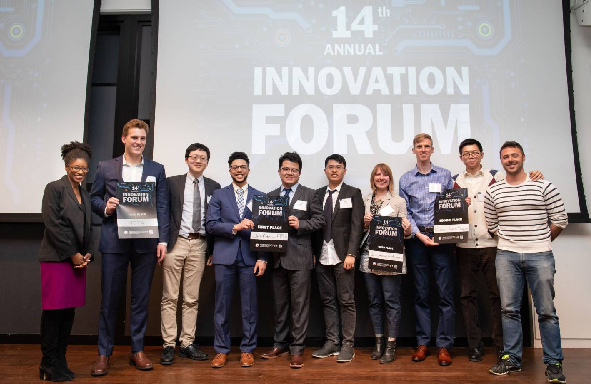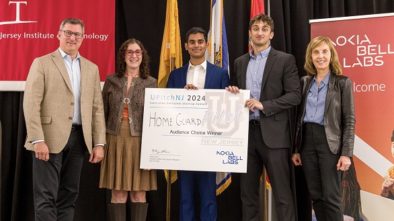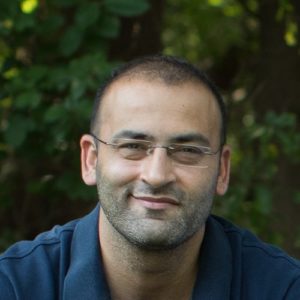Team Pitching Ultra-Efficient Power for Data Centers Wins at Keller Center Innovation Forum
The Princeton University Keller Center held its Innovation Forum on February 27, which showcased talent from across the university.
The nine teams represented collaborations among different academic disciplines and among graduate students, senior researchers and faculty members, as well as undergraduates, said Margaret Martonosi, the Keller Center director in an article on the Princeton website by John Sullivan, Office of Engineering Communications.
The winning team developed a new power technology that the team believes can dramatically cut the amount of electricity used by data centers:
Ultra-efficient Energy Processing Unit (EPU) for future data centers
Minjie Chen, assistant professor at Princeton’s Department of Electrical Engineering and Andlinger Center for Energy and the Environment; Ping Wang, graduate student in electrical engineering; Youssef Elasser, graduate student in electrical engineering; and Yenan Chen, postdoctoral researcher in the electrical engineering department and at the Andlinger Center for Energy and the Environment
Working at the Princeton PowerLab, the team has developed a new type of Energy Processing Unit, which supplies power to computing units with extremely high efficiency. Because theirEPUs are compact and efficient, the team believes that they will cut electricity consumption by data centers without requiring as much space as current systems. The team said that the technology was applicable to other high-power uses, including solar farms and grid-level battery storage systems.
The second-place winner was a team that used ultrasound to produce high-quality medical images, such as mammograms, that can assist with diagnoses in ways not currently available:
Advanced quantitative medical imaging
Greg Davies, postdoctoral researcher in geosciences; Etienne Bachmann, postdoctoral researcher in geosciences; Darren Hammell, president and CEO of Princeton Power Systems (Lawrenceville) and entrepreneur-in-residence at the Andlinger Center for Energy and the Environment; Jason He, postdoctoral researcher in geosciences; and Jeroen Tromp, the Blair Professor of Geology and professor of geosciences and applied and computational mathematics.
The team harnessed techniques used for oil and gas exploration and scaled them for medical uses. Their system couples the speed and safety of ultrasound with the high-quality images from sensors such as MRIs and X-rays. Because the new technique can measure tissue characteristics, including stiffness and density, it can be used as a diagnostic tool in ways that other imaging techniques cannot. The team believes that its technology can increase the accuracy of diagnoses and decrease the need for invasive testing.
The other presenters:
Secure data linkage across private healthcare data sets
Michael Jemison, graduate student in mathematics.
As more healthcare data become available from nontraditional sources such as smartphones and wearable devices, they offer great benefits to researchers and doctors. Properly used, the data from multiple data sets can lead to medical advances, improve treatment and avoid problems like adverse drug reactions. But the use of data also poses questions regarding the protection of participants’ privacy. Jemison is developing algorithms that are designed to protect that privacy with mathematically provable guarantees, while maintaining high-quality data for researchers.
Plasma contact microphone for structural health monitoring
Johan Carlsson, a principal research scientist at RadiaSoft (Boulder, Colo.) and former staff member of the Princeton Plasma Physics Laboratory.
As solid structures wear out, they suffer tiny cracks that emit a characteristic sound that can be detected by special microphones. Most of the microphones currently used rely on crystals to function. But the crystals, Carlsson said, can be damaged by high temperatures or radiation. As an alternative, he has developed a microphone based on ionized gas (or plasma) that can withstand both high temperatures and neutron exposure. Carlsson plans to develop the microphones initially for high-value structures such as nuclear plants, and later for infrastructure, including bridges.
Nonintrusive, non-spoofable thermal flow meter
Andrei Khodak, senior engineering analyst, Princeton Plasma Physics Laboratory.
Khodak has developed a flow meter that can be clipped onto the side of a gas pipe either in an industrial facility or in a home. Khodak said that there are currently no simple flow meters that can measure a gas without installation inside a pipe. His external model is cheaper and easier to use, and can be employed in systems that are not possible to open, either because the tester does not own the pipe or the gas is hot or hazardous. The flow meter uses a small heater and measures the ability of the gas to transfer heat away from the heater as a way to track its flow rate. The meter can also alert the owner to leaks.
Simple genetic assay of mutations associated with hyper-social behavior in domestic dogs
Bridgett vonHoldt, assistant professor of ecology and evolutionary biology.
Scientists have identified genes in canines, including dogs and wolves, that are associated with an increase in sociability with humans. The team has developed a test that uses a mouth swab to determine whether a dog has a genetic predisposition to friendliness. In her presentation, vonHoldt said that the test could be particularly useful to breeders of service dogs because the training is expensive and has a high failure rate. Besides helping to determine which puppies would be most suited for training, the test could also help shelters match dogs with prospective owners.
Bio-InspiRed Dynamic Shading device (IRiS)
Victor Charpentier, graduate student in civil and environmental engineering, and Sigrid Adriaenssens, associate professor of civil and environmental engineering.
To both modulate light exposure in buildings and prevent heat loss, the IRiS team has developed a system of small sheets that fit over windows and shift their positions to follow the sun throughout the day. Inspired by the movements of the Stylidium flower, the sheets require no external mechanism to shift their positions. The researchers have developed algorithms that allow them to calibrate the sheets’ movement to diffuse the light entering a building while reducing glare for the occupants. The system has the potential to reduce energy costs and increase comfort, Charpentier said.
General Gondolas
Steven Li, graduate student in physics and mechanical and aerospace engineering.
One of the technical challenges of balloon-borne scientific projects is the construction of the gondola, which holds the scientific equipment and connects to the balloon. Research teams often build their gondolas from scratch, which means high costs and potential failures. The General Gondolas team seeks to provide custom building and launch services to scientific ventures. As the market grows, Li said, the team plans to expand to nonscientific ventures and space platforms.
Vertical Injection Technology Apparatus (VITA)
Miles Cole, undergraduate class of 2021, Craig Arnold, professor of mechanical and aerospace engineering and director of the Princeton Institute for the Science and Technology of Materials.
Telling the story of his own hemophilia and the injections it requires, Cole said that the U.S. spends $3 billion a year due to infections and injuries related to medical injections. The team is developing a robotic system to wrap around a patient’s arm and deliver a precise injection without injury. The device uses infrared optics to map blood vessels and tactile sensing to inject and hold the needle steady during the procedure. The system uses custom needles, but is also designed to work with the patients’ syringes. The team is in the design stage, but hopes to have a working device by the end of the summer.
About the Forum
The Innovation Forum is sponsored by the Keller Center in conjunction with the Office of Technology Licensing and the business advisory firm Wiss & Company (Livingston).
Judges for this year’s event included: Paul Chamberlain, class of 1985, an early-stage investor and adviser to senior executives in emerging technology companies; Deborah Hoover, president and CEO of the Burton D. Morgan Foundation (Hudson, Ohio); Jake Leschly, class of 1988, former president and CEO of Ingenuity Systems (Redwood City, Calif.) before its acquisition by QIAGEN (Hilden, Germany); Darrell Penn, 1999 graduate and director of corporate development for Merck & Co. (Kenilworth); and Isa Watson, founder and CEO of Squad, by Envested (New York).
####




